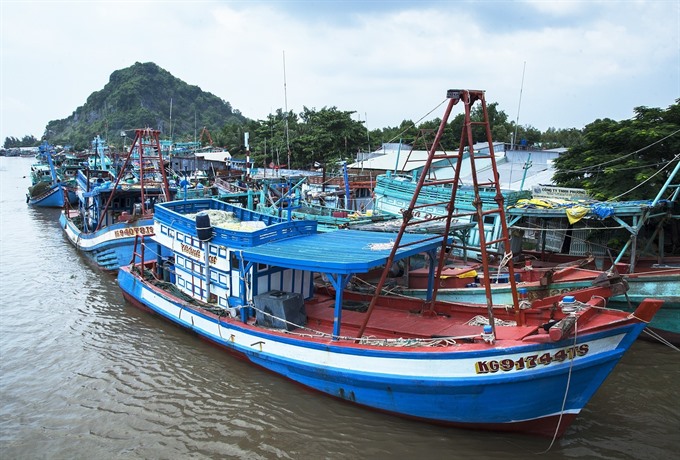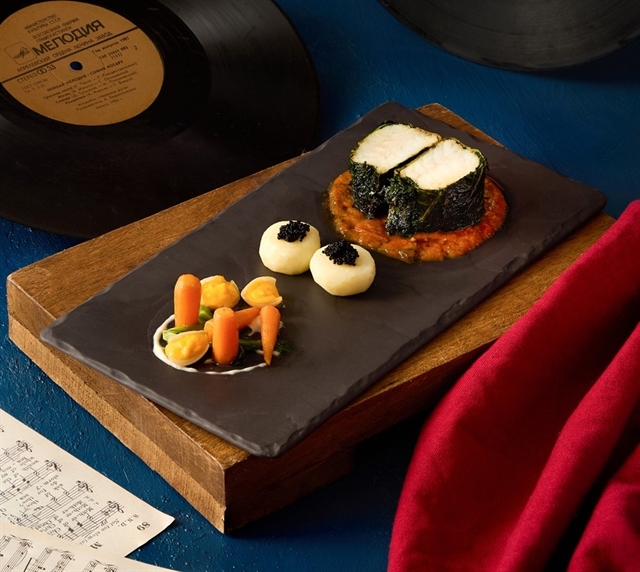 Society
Society

Most deeps-sea fishing vessels based in the Mekong Delta province of Kiên Giang are equipped with communication equipment to ensure their safety.
 |
| Offshore fishing ships dock at the Ba Hòn Estuary in Kiên Giang Province’s Kiên Lương District. – VNA/VNS Photo Hồng Đạt |
HCM CITY – Most deep-sea fishing vessels based in the Mekong Delta province of Kiên Giang are equipped with communication equipment to ensure their safety.
Nguyễn Văn Tâm, director of the province’s Department of Agriculture and Rural Development, said most offshore fishing vessels have equipment to receive news from and communicate with the mainland.
Boats with an engine of 90 horsepower or more have additional equipment like GPS and fish finders whilst those with engines of 400hp have an automatic identification system, he said.
The province is also installing black boxes in more than 4,000 vessels that are 15m or longer, with the Ministry of Agriculture and Rural Development assisting with their installation on around 600 ships measuring more than 20m.
Black boxes are used to record the route the vessels take, speed and other data.
At a meeting held this week to discuss managing fishing ships the department called on the province’s People’s Committee to allow companies selling the black boxes to instal them on a pilot basis in offshore fishing vessels next month.
The province should also set up an assessing team to evaluate them during and after the pilot period, it said.
With its 200km coastline, 143 small and large islands and a sea area of 63,000sq.km, Kiên Giang’s maritime economy possesses great advantages for development.
The province caught 432,720 tonnes of seafood in the first nine months of the year, up 7 per cent year-on-year.
The catch included many high-value species like shrimp and cuttlefish, which are both consumed domestically and processed for exports.
Kiên Giang, which is one of the country’s leading fishing provinces, accounts for nearly 40 per cent of the delta’s total seafood catch.
Phạm Vũ Hồng, chairman of the People’s Committee, said the province has reorganised fishing methods for each fishing ground to both exploit and protect marine resources to sustainably develop the industry.
It plans to invest in modern equipment, fishing tools and advanced techniques for fishing vessels to increase the value of their catches, he said.
It targets a catch of around 500,000 tonnes of fish and other aquatic species annually from now through 2025, with a focus on improving quality and value, according to the department.
In 2015-20 it is carrying out many programmes to protect and develop marine resources, including those to manage marine reserves in Bãi Thơm and Hàm Ninh communes in Phú Quốc District.
To sustain seafood stocks, it has tightened management of natural marine areas where aquatic species reproduce.
It also regularly releases shrimp, crab, fish and other fry into the sea to regenerate stocks.
Tâm of the agriculture department said the province has reduced its investment in low-capacity fishing vessels used for near-shore fishing and has instead been building high-capacity vessels in recent years.
Banks in the province have provided soft loans worth a total of VNĐ332 billion (US$14.2 million) to fishermen to build 48 high-capacity fishing boats since 2014, he said.
The province has focused on investing in infrastructure for the fisheries sector, including ports and storm shelters for vessels.
There are five fishing ports in the province and 26 shipyards that can build 300 new vessels a year and repair more than 600.
There are 10,763 boats based in the province, including 10,364 for fishing and 376 to provide them with logistics services.
Quảng Trọng Thao, deputy director of the department, said the province plans, in co-operation with research institutes and universities, to improve fishing vessels and tools to lessen the damage they cause to the ocean and reduce the catches of juvenile creatures.
It would focus on developing fishing methods that are friendly to the environment like offshore gillnet, purse seine and longline fishing, and reducing the use of methods that have an adverse impact on like trawling.
It is helping fishermen who fish near shore or have adverse effects on fishery resources switch to other jobs such as breeding bivalve species and fish in floating cages along the coast.
It is educating fishermen on legal regulations for protection of marine resources, especially the 2017 Fishery Law. – VNS




